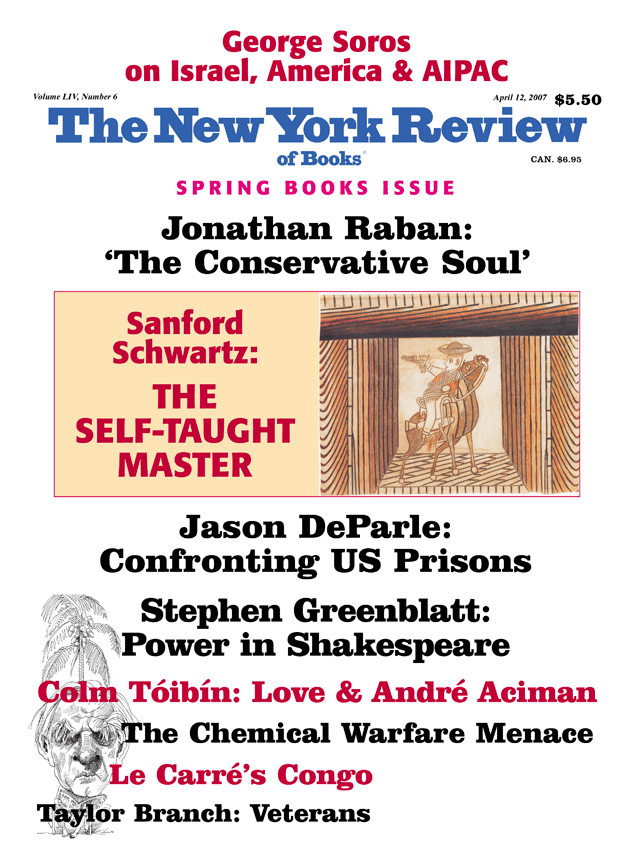In response to:
The Heroic Nerd from the October 19, 2006 issue
To the Editors:
Having imbibed a taste for Lovecraft in the prescribed manner, at the age of fourteen, I now observe the rise of his literary fortunes with great satisfaction.
While I agree with Luc Sante [“The Heroic Nerd,” NYR, October 19, 2006] that Lovecraft had a peculiar gift for inventing evocative names, I must point out that “Tsathoggua” was coined by another fantasist, one of Lovecraft’s numerous correspondents whose work also appeared in Weird Tales, but whose name has lamentably not yet become as commonly known. Clark Ashton Smith (1893–1961) was a Californian poet after the George Sterling school, a painter, sculptor, and pulp writer whose fiction was more decadent and exotic in flavor than Lovecraft’s, but also reflected a love of arcane language and bizarre names—Quachil Uttaus, Malygris, Rlim Shaikorth, Vulthoom, Avoosl Wuthoqquan, and Tsathoggua.
Many commentators have observed the oddly contagious character of Lovecraft’s fiction; a variety of writers, having read and admired it, find themselves oddly motivated to produce their own “Lovecraft story.” In this respect, Smith (whom Lovecraft called “Klarkashton”…HPL, for his trouble, was correspondingly dubbed “Eich Pi-El”) suffered himself to fall into Lovecraft’s shadow, but he was far from alone. Even as promiscuously erudite an author as Borges found himself strangely compelled to pastische Lovecraft (his story “There Are More Things” is included, with apologies, in The Book of Sand).
Lovecraft and his circle were themselves engaged in a Borgesian experiment, as each made shuddering reference to monstrous gods and mind-blasting books created by the others, as if they were all privy to an actual canon of hidden occult lore. Thus “Tsathoggua” is mentioned in Lovecraft stories, and in fact Lovecraft was the first of the two to refer to him in print, having encountered the name in the pages of “The Tale of Satampra Zeiros,” in manuscript. Smith wrote that story in 1929, but couldn’t find a publisher for it until 1931. By then, Lovecraft’s “The Whisperer in Darkness,” in which Tsathoggua is invoked, had already appeared.
Smith, for his part, made reference to Lovecraft’s “Kthulhut” and “Yok-Zothoth” with a flippancy that has as much to do with the sardonicism of Bierce as with the lyrical fantasy of Lord Dunsany. It should be noted in passing that there are some who have been taken in by this elaborate literary illusion, and thus really believe that secret knowledge, such as Smith and Lovecraft appeared to possess, did, or does, actually exist. Which assumption, we, of course, can say with complete assurance is utterly without foundation.
Michael Cisco
New York City
This Issue
April 12, 2007



